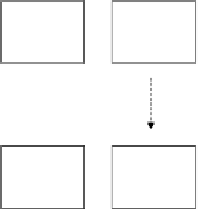Information Technology Reference
In-Depth Information
The FOUNDATION Fieldbus consists of two main layers: the communications layer and the
user layer. The components in these layers are illustrated in Figure 19.4. The user layer oper-
ates above the communications layer and includes function blocks, resource blocks, trans-
ducer blocks and alarm notifications.
Resource
block
Fieldbus
network
Comm-
unication
Protocol
(Data
link)
Comm-
unication
interface
(physical)
Function
block
Transducer
block
Object
dictionary
Input/
output
signals
Function
block
shell
Function
block
Transducer
block
Figure 19.4
FOUNDATION Fieldbus architecture
19.3.3 Function blocks (FB)
The user layer supports device configuration, and uses function blocks. A device can have
any number of function blocks. These are used for control, diagnostic, safety and production
accounting purposes, and define such things as:
•
Standardised parameter names.
•
Data types.
•
A cascade initialisation mechanism.
•
Status propagation.
•
An antiwindup mechanism.
•
Trend collection mechanism.
•
An execution scheduling mechanism.
•
Block modes and behaviors in response to mode changes.
•
Status of process variables.
•
Rules for propagation of status.
•
Behaviours in response to status changes.
These include:
•
Standardised function blocks.
•
Vendor-enhanced function blocks and vendor-custom function blocks.
19.3.4 Resource blocks (RB)
Each device also has an RB, which contain parameters relating to the physical device, such
as:








